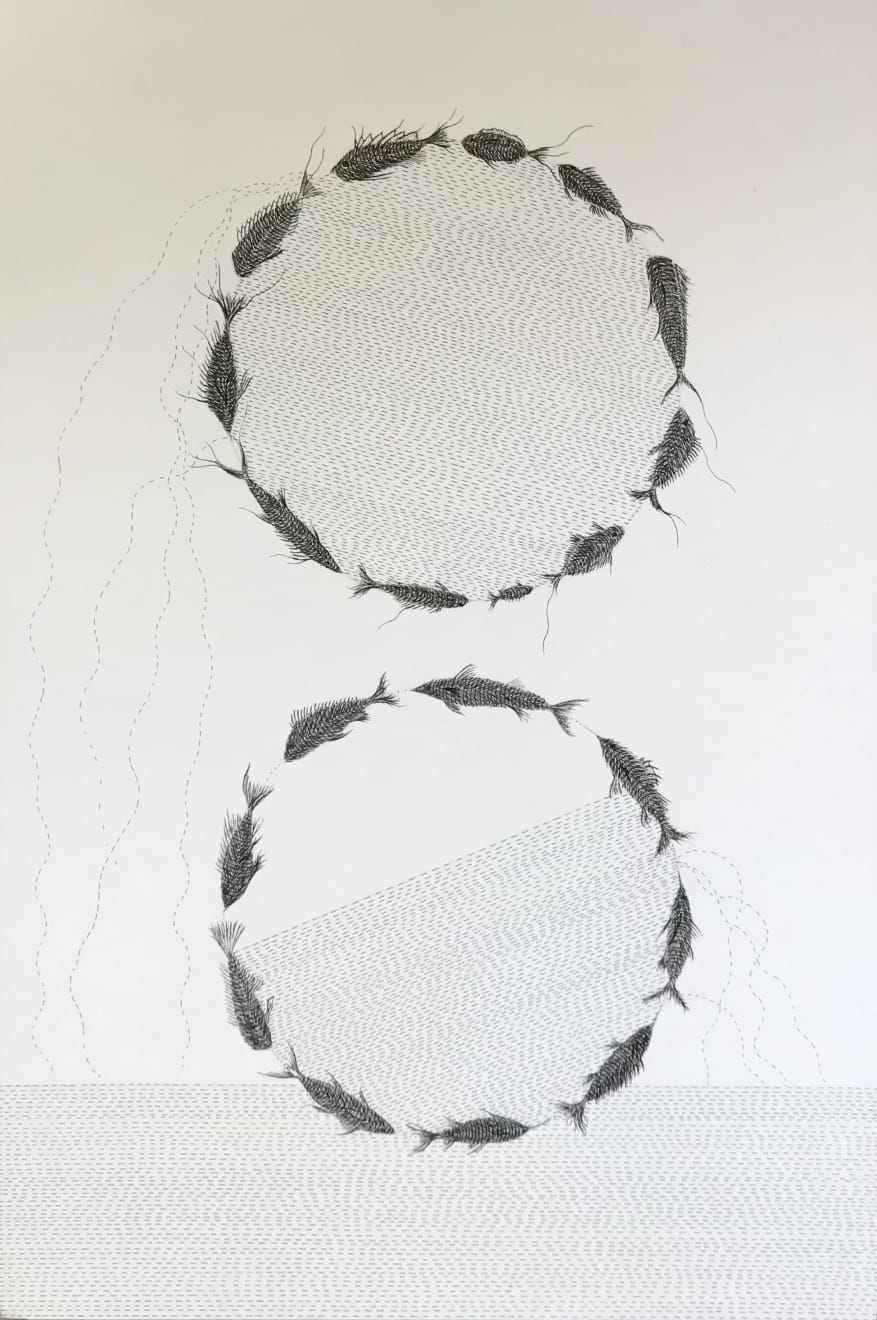Parag Tandel b. 1978
Coast is Clear, Autopolisphilia Series #6, 2020
Graphite & Archival ink on Archival paper
(HSN Code: 970110)
(HSN Code: 970110)
18 x 12 inches
Copyright Parag Tandel, 2020
In Parag's work. we see a curiosity to understand the relationship we share with the sea or water life. A relationship that has changed and been impacted because of constant...
In Parag's work. we see a curiosity to understand the relationship we share with the sea or water life. A relationship that has changed and been impacted because of constant plundering through urban development. He has been closely observing this aspect since he was a child to date, as he documents the tradition and culture of the Koli Community.
According to Noopur Desai, 'Parag’s connection with the city of Mumbai (and also Thane) reflects in his current series of drawings. Parag’s preoccupation with the urban landscape arises from his experience of loss of cultural practices, habitation, vegetation, sea species and also occupations of the Koli community. These effects of urbanisation and changing economic structures on Mumbai’s indigenous community, where Parag comes from, play a crucial role in shaping his art practice. His work has emerged from a constant dialogue with the community through various public art initiatives and dialogical processes. However, he extends his concerns and queries to the larger questions of cultural practices, urban landscape and ecology. While invoking a feeling of alienation and displacement as well as connection and longing, Parag’s intricate drawings represent the transforming landscape of the city. Repetition of fine lines and forms take foreground in these drawings that require a detailed working method and keen observation of his surroundings.'
According to Noopur Desai, 'Parag’s connection with the city of Mumbai (and also Thane) reflects in his current series of drawings. Parag’s preoccupation with the urban landscape arises from his experience of loss of cultural practices, habitation, vegetation, sea species and also occupations of the Koli community. These effects of urbanisation and changing economic structures on Mumbai’s indigenous community, where Parag comes from, play a crucial role in shaping his art practice. His work has emerged from a constant dialogue with the community through various public art initiatives and dialogical processes. However, he extends his concerns and queries to the larger questions of cultural practices, urban landscape and ecology. While invoking a feeling of alienation and displacement as well as connection and longing, Parag’s intricate drawings represent the transforming landscape of the city. Repetition of fine lines and forms take foreground in these drawings that require a detailed working method and keen observation of his surroundings.'
